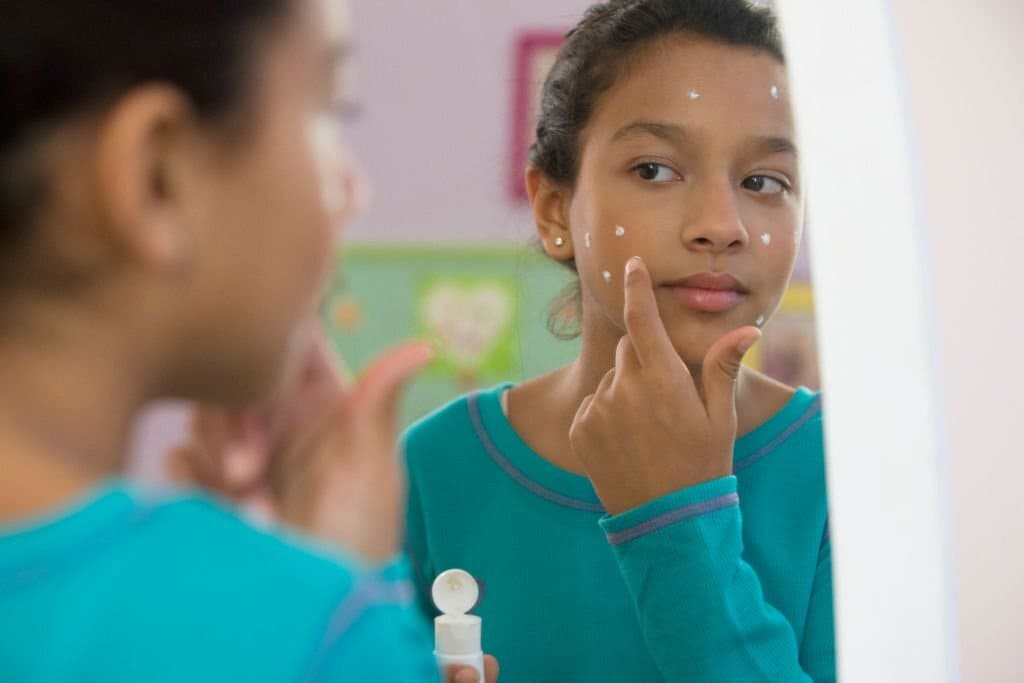You are probably wondering how to remove pimples without leaving a mark. Pimples are one of the most common skin issues and they tend to show up mainly at the time of puberty. But it can happen at any age or time. No matter what kind of skin you have, you’ve probably experienced acne and pimples before. So, we have elaborated few effective ways to remove pimples for clear skin and listed the best cream/ face wash for pimples.
What are the causes of pimples?
1. The Sebaceous Gland
The sebaceous glands are a part of your skin that produces and releases sebum (an oily substance). It is a protective layer that helps your skin stay hydrated. Except for the palms of your hands and the soles of your feet, you have a sebaceous gland in other parts of your body. Your face and scalp are the most sebaceous gland-rich areas of your body. As the glands produce sebum in the pores of the skin, new cells are constantly forming and the dead cells are being removed.
Although the skin’s pores are capable of cleaning themselves, there are chances of dirt and debris can combine with sebum (which forms a sticky material) to block the opening of the pores. In this case, microorganisms (can multiply and grow) and dead skin cells get locked resulting in bumps that we call pimples. Also, the excess production of oil forms glue-like material and contribute to the blockage of pores.
2. Yeast Infection
It is usually called fungus acne, a skin condition that happens when your hair follicles get infected with a type of fungus called Malassezia yeasts. It starts out with a bunch of small, red, bumps on your skin that are itchy. Sometimes the bumps get bigger and turn white, or yellow patches of pus.
How to Prevent Pimples?
1. Know Your Skin Type
Individuals with oily skin tend to be more susceptible to pimples, however, any skin type can develop pimples. Knowing what type of skin you have, can help you decide what to use and what to avoid. The different types of skin are,
Dry skin: Your skin may feel tight and flaky, and it may turn ashy gray. You may also experience itching, redness, as well as small cracks. Cracked skin is most commonly found on very dry skin. In severe cases, the cracks may be much deeper and even bleeding.
Combination Skin: Most people with combination skin feel oily in their T-zone, which includes their forehead, nose, and chin, but dry elsewhere. It can also feel oily and dry in in different locations.
Oily Skin: Oily skin type is porous, moist, and shiny. It is characterized by excess oil production by the sebaceous gland and is typically caused by genes or hormones.
Sensitive Skin: Sensitive skin is characterized by a hypersensitive response to products and a tendency to develop rashes, irritations, or discolorations. It is possible to have sensitive skin in association with any other skin type.
Read More: The 7 Best Face Washes For Oily Skin (2023)
2. Wash Your Face and Keep it Clean
No matter if you have pimples or not, washing your face twice a day is essential to get rid of dirt, dead cells, and excess oil on your skin. But washing more than twice a day isn’t necessarily needed, it could actually hurt your skin more than it helps. Always wash your face with warm water and use a gentle facial cleanser, not a harsh body soap, it can hurt your already irritated skin and make it worse. A mild cleanser can help to keep pores open, thus reducing the accumulation of dead skin cells and bacteria.
Read More: Best Face Washes for All Skin Type, Reviewed
3. Moisturize Your Skin
Moisturizers are a great way to keep your skin hydrated, especially if you have acne-prone skin. When your skin gets dry, it makes oil to balance out the dryness, which can lead to pimples. Lots of moisturizers have oil, synthetic fragrances, or other stuff that can irritate the skin and give pimples. Make sure you check the ingredients list before buying a moisturizer so you know it is free of fragrance and non-comedogenic (does not cause blocked pores.).
Read More: Our Top Picks for Best Moisturizer.
4. Wash Regularly
Wash regularly whatever you use on your face. Washing or changing pillow covers twice a week can help get rid of dead skin cells and bacteria that can lead to pimples.
5. Take Enough Water
It is super important to stay hydrated if you want to keep your skin looking and feeling its best. Pimples happen when your pores get clogged up with dead skin cells, which causes your skin to produce more oil. Drinking adequate water, a day can help keep your skin hydrated and keep you away from pimples. Also, keeping your body hydrated can help boost your immune system, which helps fight off infections and can help against pimples.
6. Avoid Touching Your Face
Touching your face is not one of the biggest causes of pimples, however, sometimes it may encourage pimples to occur. Bacteria and other impurities that clog pores can be transferred to your face when you touch it. It is hard not to touch your face, but it is important to be mindful of how often you do it and try to avoid it as much as you can.
How to Remove Pimples with Simple Spot Treatments?
1. Aspirin Paste
Salicylic acid is a powerful acid found in aspirin. Salicylic acid is known to be very effective at removing dead skin cells and other impurities from the skin. Just take 1 to 2 aspirin tablets. Mix the aspirin tablets with a few drops of water and make a paste. Apply the paste directly on your pimple. Leave it on the pimple for 10-15 minutes. Rinse off with warm water.
2. Benzoyl Peroxide
When selecting an OTC (over-the-counter: medicine that you can buy without a prescription) product, it is important to consider two essential ingredients that are commonly found in many drug stores. Salicylic acid is such one as above mentioned.
Benzoyl Peroxide is another important substance to consider, as it not only reduces oil and removes dead skin cells from the skin, but also aids in the destruction of the bacteria responsible for pimples. Both components are safe to use and work in a similar manner. Using too much salicylic acid and benzoyl peroxide or combining them with other products can irritate your skin. Use only products containing 0.5% to 2% of salicylic acid and 2.5% to 5% of benzoyl peroxide.
3. Ice Cubes
The easiest way to get rid of inflamed pimples is to apply ice. To do this, wrap a cloth in ice and press it against the affected area for a minimum of three to four minutes. This process can be repeated multiple times during the day to reduce swelling and soothe the affected skin.
How to Remove Pimples Naturally and Permanently
1. Gram Flour or Chickpea Flour
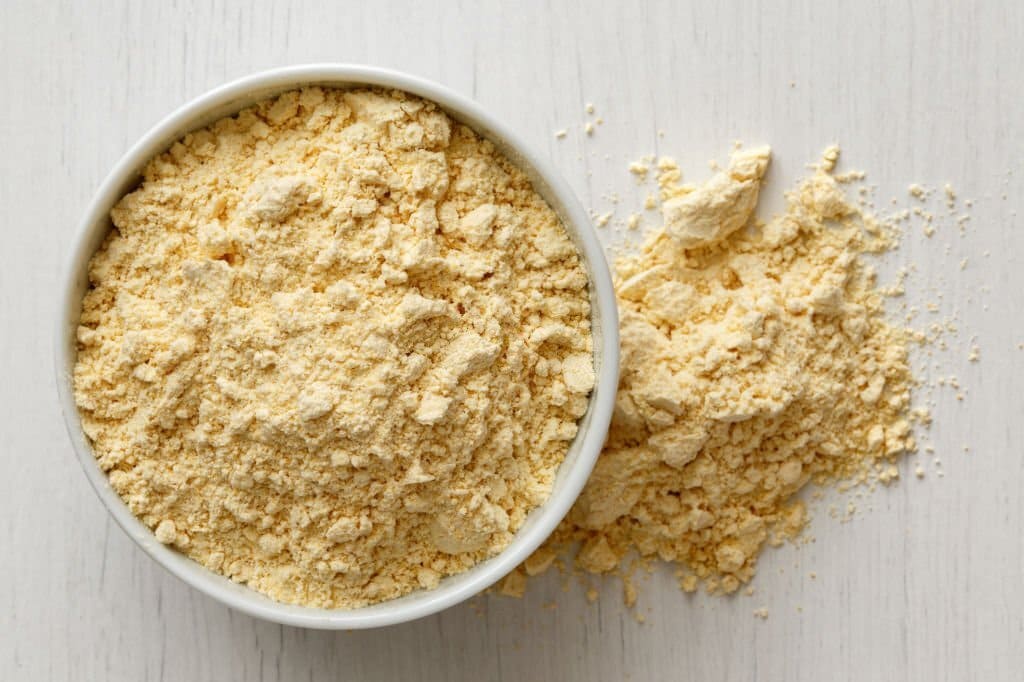
Gram flour is a great and most effective option as it helps to get rid of oil and clog pores. When you apply it topically, it helps to absorb the extra oil that is built up on your skin. This means your skin stays oil-free longer. Zinc present in gram flour helps fight off the inflammation that can cause acne. Also, the presence of vitamins and minerals exfoliates and alkalizes your skin, helping to get rid of impurities and stop breakouts and pimples by opening your pores.
How to use gram flour to remove pimples
- Combine chickpea flour with a sufficient amount of yogurt to form a fine paste.
- Apply it to your face and leave it for 15 -20 minutes.
- Wash your face with lukewarm water.
Note: Based on your availability, you can replace yogurt with rose water, honey, aloe vera gel, and tomato juice.
2. Green Tea and Honey
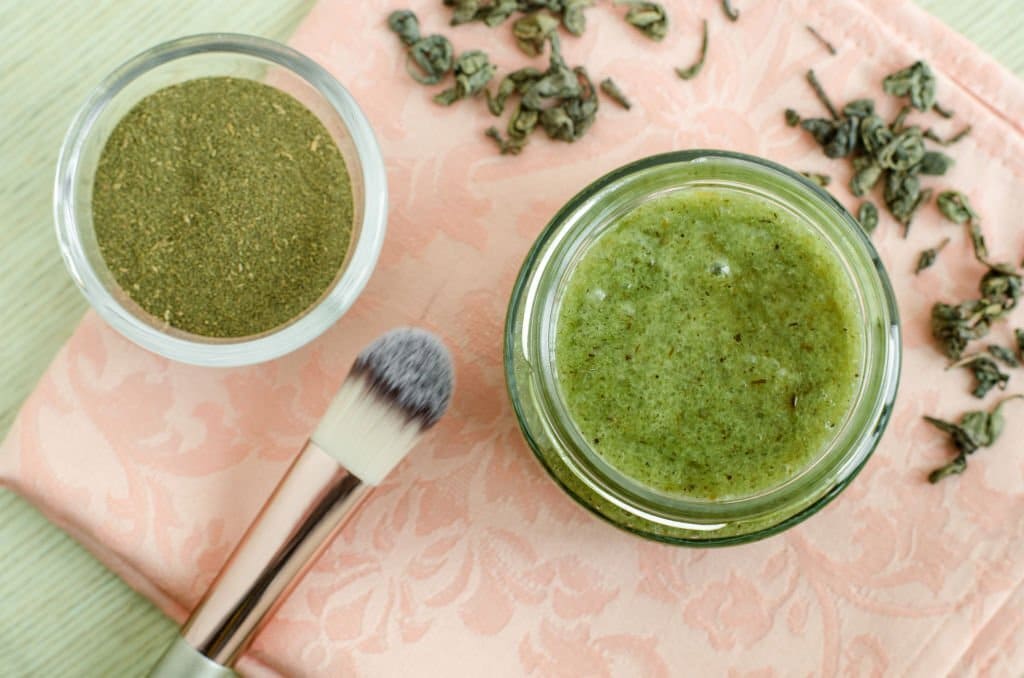
This method is one of the best fast remedies to get rid of pimples. Also, the easiest one since green tea and honey is readily available in the nearby departmental store. Green tea is composed of plant-derived compounds known as catechins, which are known to possess antibacterial, antiseptic, and antioxidant qualities. When evaluating the health benefits of green tea, researchers typically focus on this compound. One of the catechin compounds found in green tea, EGCG (epigallocatechin gallate), is particularly noteworthy for its potential anti-inflammatory and antibiotic properties, which may be beneficial in treating pimples.
How to use green tea to remove pimples
- Take some green tea leaves or 2 tea bags and dip them in warm water for 3 to 5 minutes.
- Strain the water and allow the leaves or tea bags to cool. Cut the leaves into small pieces.
- Add a spoonful of honey and make it a fine paste.
- Apply the paste on your face and leave it for 20-30 minutes.
- Wash your face with warm water and pat dry. Apply it regularly as per your skin requirement.
Note: You can also use yogurt or aloe vera instead of honey.
3. Grapes Face Mask
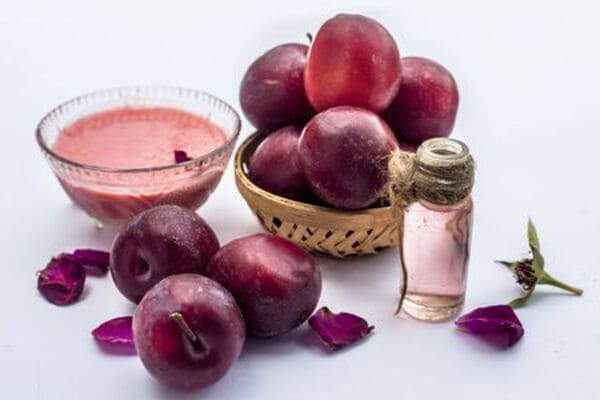
Red grapes are packed with antioxidants, which help fight free radicals and can help slow down the signs of aging. Plus, the antioxidants in red grape juice can help fight skin inflammation caused by acne or pimples. So, if you are looking to brighten up your skin, adding some red grape juice to your meals or using it as a facial mask can help make your skin look clearer and brighter.
How to use grapes to remove pimples
- Blend 8 to 10 refrigerated grapes with small tomato.
- OR mash grapes and add 1 tablespoon of yogurt (instead of tomato) and squeeze a few drops of lemon .
- Apply it to the face and allow to sit it for 30 minutes.
- Wash your face with lukewarm water and dry gently.
4. Apple Cider Vinegar
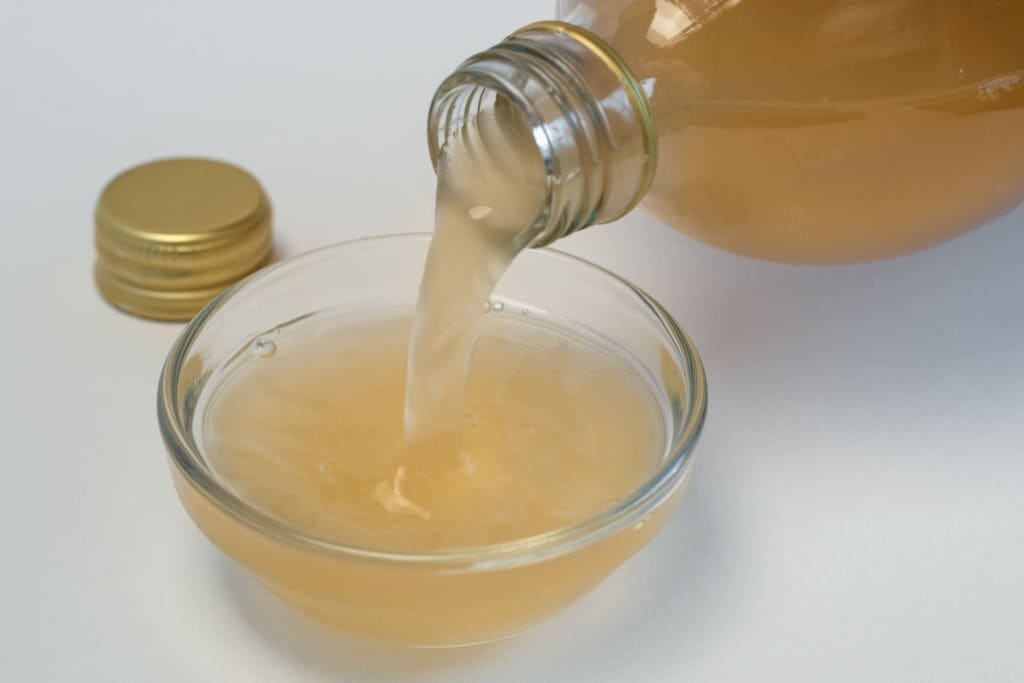
If you are looking for a natural toner that can help with pimples, then apple cider vinegar might be the one for you. Apple cider vinegar is an anti-aging and pH-balancing toner that acts as a natural agent. If you wash your face with cosmetics, it can break down your skin’s oil barrier, so apple cider vinegar helps to alkalize your skin and balance out its pH levels. Plus, it has strong antibacterial properties that kill bacteria that cause pimples.
How to use apple cider vinegar to get rid of pimples
- Mix 1 part of apple cider vinegar with 3 components of water (additional water may be necessary for sensitive skin).
- Apply the mixture using a cotton ball to the affected area.
- Allow the mixture to sit for 3 -5 minutes and wash with water and pat dry.
- Repeat this process 1 to 2 times per day.
Note: Applying apple cider vinegar can cause irritation and burns. Please use it in small amounts and always dilute it with water.
5. Tea Tree Oil
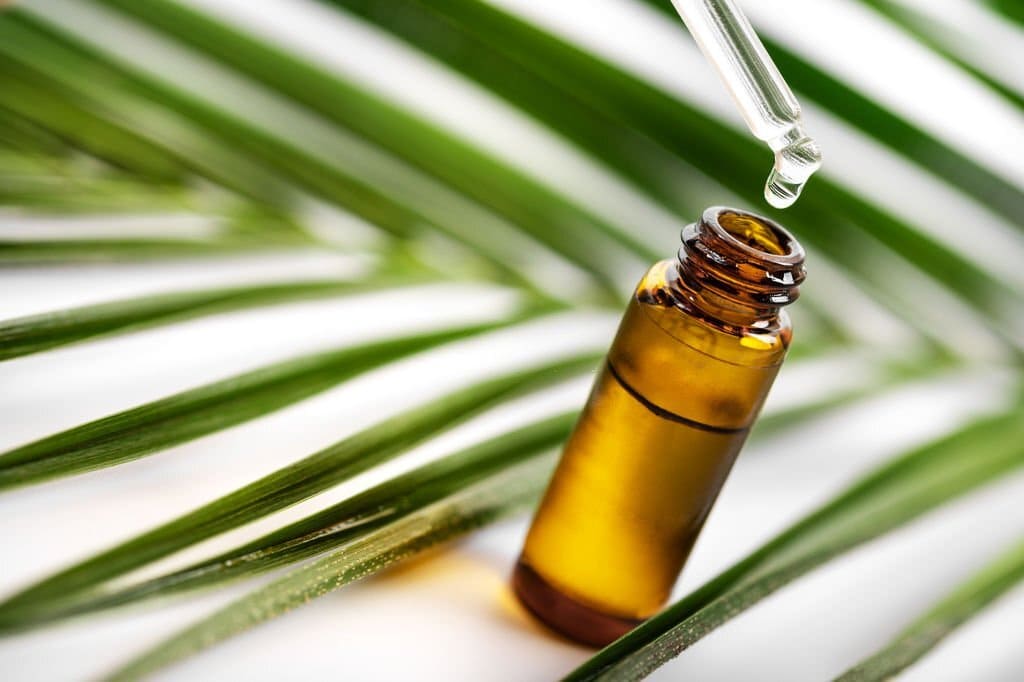
Tea tree oil is a tea essential oil made from the leaves of tea trees grown in Australia. Do not think that the tea tree is the same as the common tea plant that is used to make black tea or green tea. It is great for a variety of conditions, like skin and hair issues, as it has anti-inflammatory and soothing, as well as anti-allergic, and anti-bacterial properties. Because of these properties, it is considered one of the popular remedies for pimples/ acne. Tea tree oil should not be applied directly to the skin. You must dilute tea tree oil with a carrier oil.
List of a few carrier oils: Coconut oil, Black cumin seed oil, Jojoba oil, Grapeseed oil, Olive oil, and Almond oil.
How to use tea tree oil to remove pimples
- Mix 2 drops of tea tree oil with 12 drops of carrier oil
- Add a cotton ball to the solution and apply it directly to the pimples.
- Apply 1-2 times per day, or as required.
Note: Never consume tea tree oil orally, as consuming it can lead to serious health complications. Tea tree oil should only be applied to the skin and should be diluted prior to use.
6. Multani mitti (Fuller’s earth)
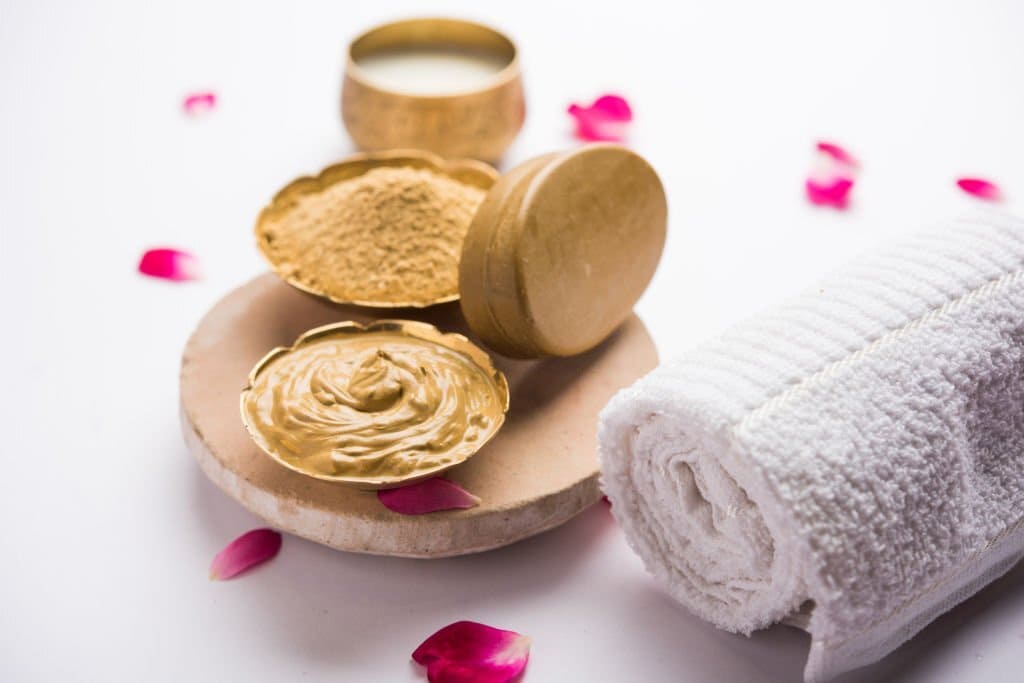
If you are looking for a quick and easy way to get rid of pimples or acne marks, Multiani mitti could be the answer. It is an effective face pack that can be used on its own or in combination with other ingredients to work for different skin types. The cooling and tightening properties also help to reduce wrinkles, fine lines, and pigmentation. Multani mitti is great for pimples because it absorbs oil, so you can use it as a spot treatment. It can be used as a face mask, or you can mix it with water and put it on your pimple to dry it out and reduce the redness.
How to use Multani mitti to get rid of pimples
- Mix one and a half tablespoons of Multani mitti with water and make a paste.
- Apply to your face and leave it for 20 minutes.
- Wash with lukewarm water.
Note: You can use Multani mittiin combination with yogurt, papaya, aloe vera, egg whites, honey, avocado, and lemon to add brightness or moisture to the skin.
Our Top Picks for Best Face Cream/ Face Wash to Remove Pimples
1. La Roche-Posay Effaclar Foaming Gel
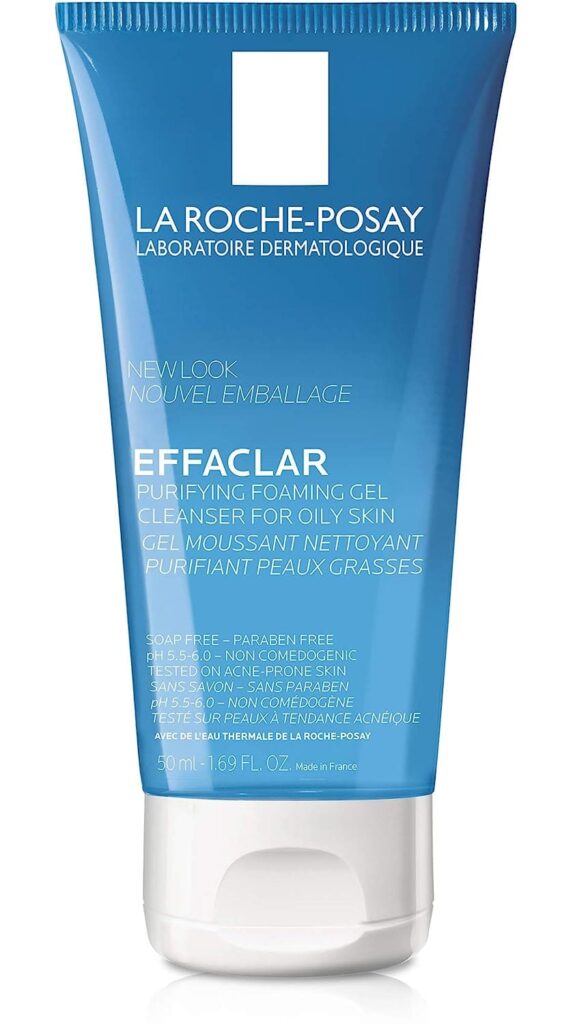
Trusted and top-rated face wash in the market. This effaclar foaming gel cleanser is specifically designed for skin that is sensitive, oily, and prone to acne. It is a gentle and effective acne facial wash that removes dirt, impurities, and excess sebum (oil).
Key Ingredients:
- Zinc Pidolate
- La Roche-Posay Thermal Spring Water
2. Neutrogena Oil Free Acne Wash
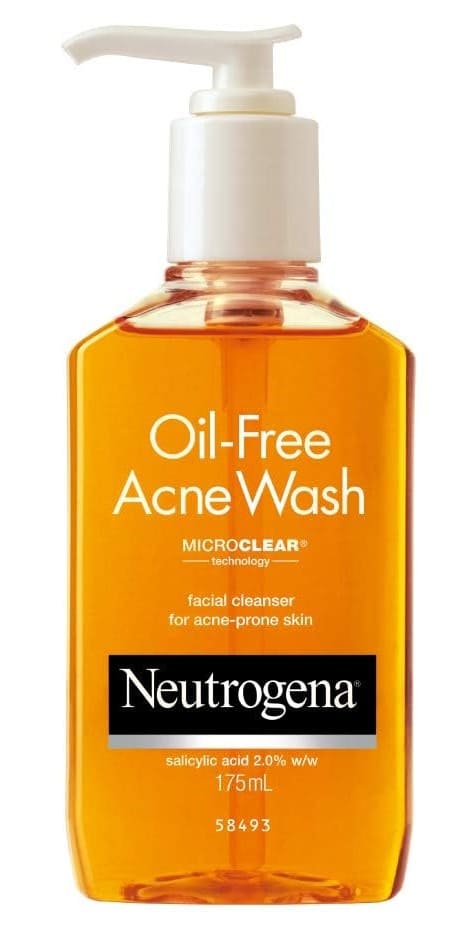
Penetrates deeply to clean pores in order to reduce pimples by eliminating excess oil and surface debris.
Key Ingredients:
- Salicylic Acid
- Anthemis Nobilis Flower Extract
- Chamomila Recutita (Matricaria) Flower Extract
- Aloe Barbadensis Leaf Extract
3. Cetaphil Oily Skin Cleanser
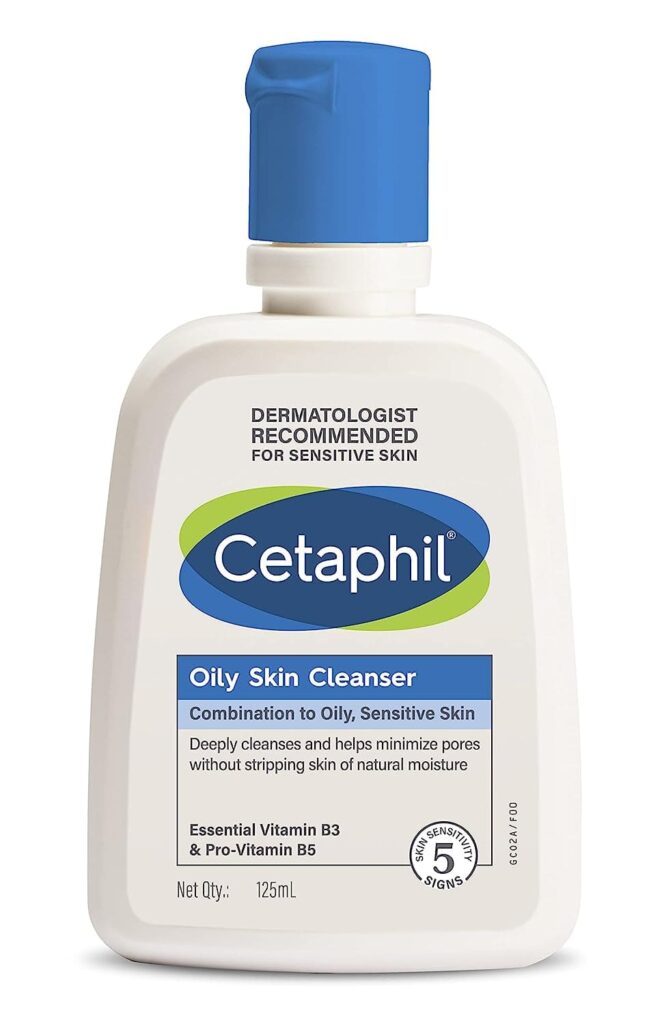
This cleanser helps get rid of surface oils, grime, and makeup without leaving your skin feeling too tight or dry. It has a gentle foaming formula that won’t irritate your skin and is perfect for oily, acne-prone, and combination skin.
Key Ingredients:
- Niacinamide (vitamin B3)
- panthenol (pro-vitamin B5)
- Glycerin
4. Vanicream Gentle Facial Cleanser
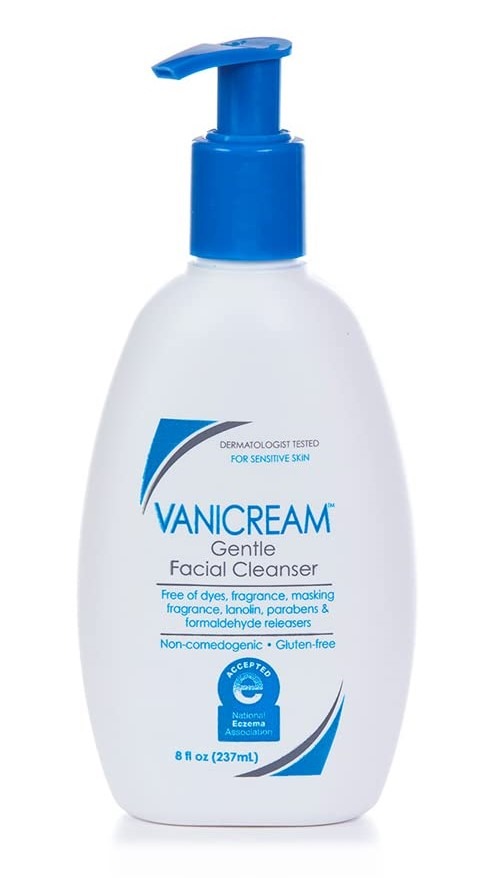
This cleanser is designed for daily facial use and is the mildest cleanser available. It helps to remove makeup and excess oils from the skin without drying it out, leaving it feeling clean and soft.
Key Ingredients:
- Glycerin
- Coco-glucoside
- Caprylyl glycol
5. Just Herbs Anti Acne Foaming Face Wash
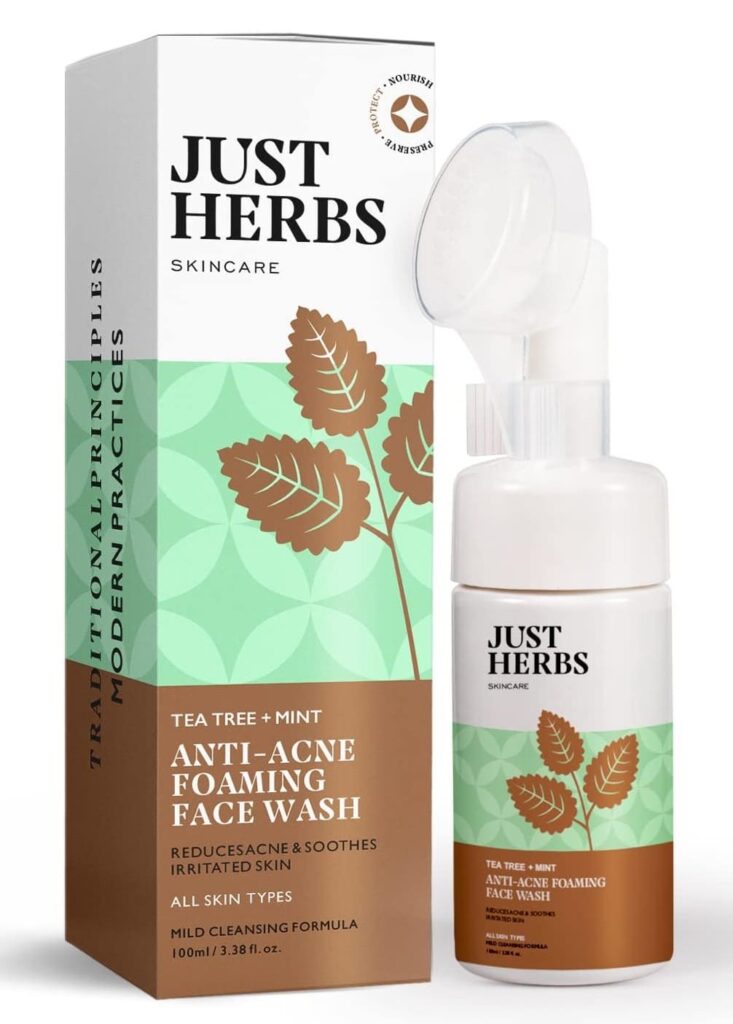
The Anti-Acne Foaming face wash contains a botanical combination of Tea Tree, and Mint, which are highly effective in fighting breakouts, soothing redness, and reducing and preventing acne scars, resulting in a clear and supple complexion.
Key Ingredients:
- Tea Tree oil
- Mint
Frequently Asked Questions (FAQs)
It is not possible for pimples to be removed or healed overnight. Pimples are typically caused by microbe proliferation, excess sebum secretion (oil production), and inflammation. These issues can be treated at the very early stages of a pimple.
The best way to treat pimples is to apply aspirin paste, using benzoyl peroxide, and salicylic acid before bed. These ways help to decrease swelling and pain, thereby reducing the visibility of pimples. However, if you are in a mild to moderate stage, regular use of a face mask prepared in natural ways is required to combat pimples. A few of the examples of best natural face masks that can be prepared at home are; Gram flour or chickpea flour, green tea plus honey, apple cider vinegar, grapes plus tomato, and tea tree oil.
If you are prone to pimples often then, yes, you should follow a few food restrictions. Foods with a high glycemic index have been shown to increase the severity of acne by increasing serum insulin concentrations, which stimulate the production of sebum (or oil), as well as increasing androgen levels. Avoiding junk food, also known as fatty food, can help to reduce the risk of acne.
Soy products are great for your health and body, but they can also have some nasty side effects. Phytoestrogens in soy can mess with your hormones and make your skin greasy, which can lead to acne. Dairy products have also been linked to acne, with studies showing that milk can raise insulin levels and make acne worse.
Eating a diet that is low in carbs can help reduce acne. Foods with omega-3 fatty acids, antioxidants, and vitamin E have anti-inflammatory benefits. Zinc helps regulate metabolism and hormones, and is often added to diets as a treatment for pimples.
1. Blackheads are small, dark-colored pimples that appear when your pores get clogged with oil or dead skin cells. Blackheads are not usually painful, but they are very visible.
2. Whiteheads are small, white pimples that appear like blackheads. They are larger and white or yellowish in color. They also get clogged when your pores get infected with bacteria.
3. Papule is a bump located beneath the skin’s surface that is less than one centimeter in diameter. The papules themselves appear to be firm, tender, and raised. Additionally, the skin surrounding the papule is often inflamed.
4. Pustules are big, sensitive bumps with a circular center full of white or yellow pus. On light skin, the area around the pustule looks red or pink, and on darker skin, it looks deep brown or black. The pus in a pustule is usually a mix of immune and bacterial cells that get trapped in a blocked pore.
5. Nodules is a large, hard, and inflamed bump that is deep inside the skin. Nodules are one of the most serious acne blemishes and can lead to skin complications like dark spots or scars. A nodule is an acne lesion that develops when infected clogged pores swell beneath the surface of the skin.
6. Cysts are large, painful, red, or white lump that is located deep within the skin. They are filled with pus and are usually soft. The most common type of acne is a cyst. If left untreated, they can lead to scarring. In some cases, they may even require surgery.

